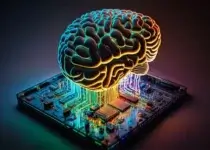Blockchain and Gaming: A Transformative Partnership
Introduction:
The convergence of blockchain technology and the gaming industry has sparked a transformative synergy, opening up new dimensions in gameplay, asset ownership, and economic models. Beyond the realm of cryptocurrencies, blockchain is reshaping the gaming landscape by addressing longstanding challenges and introducing innovative concepts. In this article, we delve into the dynamic relationship between blockchain and gaming, exploring key applications, the impact on player experiences, and the exciting potential that lies ahead.
Understanding Blockchain in Gaming:
Blockchain, at its core, is a decentralized and distributed ledger system designed to ensure transparency, security, and immutability of data. When applied to gaming ecosystems, this technology introduces novel features that redefine how players interact with virtual worlds and digital assets.
Tokenization of In-Game Assets:
One of the groundbreaking applications of blockchain in gaming is the tokenization of in-game assets. Traditionally, players invest time and money acquiring virtual items, characters, and skins within games. However, the lack of true ownership often limits their ability to trade or sell these assets outside the gaming platform. Blockchain addresses this challenge by tokenizing in-game assets, converting them into unique, tradable tokens secured by the blockchain’s decentralized ledger.
Non-Fungible Tokens (NFTs) play a central role in this paradigm shift. NFTs represent ownership of digital assets, making them unique and irreplaceable. Players can buy, sell, and trade NFTs with the assurance that ownership is securely recorded on the blockchain. This innovation empowers players by providing true ownership of their in-game items, fostering a player-driven virtual economy.
Decentralized Gaming Platforms:
Blockchain facilitates the creation of decentralized gaming platforms, challenging the traditional model of centralized game development and distribution. These platforms leverage blockchain’s decentralized nature to provide a fairer and more transparent gaming environment. Decentralized platforms often employ smart contracts to automate processes such as reward distribution, ensuring that players are fairly compensated for their contributions to the gaming ecosystem.
Decentralized applications (DApps) powered by blockchain offer a level playing field for developers, allowing them to create games without the need for approval from central authorities. This not only encourages innovation but also reduces the influence of intermediaries, giving more control to both developers and players.
NFTs and Digital Ownership:
The rise of NFTs has brought a fundamental shift in how we perceive digital ownership, particularly within the gaming industry. NFTs empower players to truly own their in-game assets. Whether it’s a rare weapon skin, a unique character, or a piece of virtual real estate, NFTs enable players to buy, sell, and trade these assets securely on blockchain-based marketplaces.
Furthermore, the concept of “play-to-earn” has gained traction, where players can earn cryptocurrency or other rewards by participating in the game. This introduces new economic models within gaming, incentivizing players to invest time and effort with tangible returns.
Enhanced Security and Fraud Prevention:
Security concerns have historically plagued the gaming industry, with incidents of hacked accounts, fraudulent transactions, and counterfeit items. Blockchain’s cryptographic security measures address these issues effectively. Each transaction is recorded on the blockchain, ensuring transparency and traceability.
The use of smart contracts further enhances security by automating transactions and ensuring that the terms of trade are executed without the need for intermediaries. This not only reduces the risk of fraud but also streamlines the trading process, providing a secure and efficient environment for players.
Gaming and Interoperability:
Blockchain has the potential to break down the silos between gaming platforms. Interoperability, facilitated by blockchain, allows players to use their in-game assets across multiple games and platforms seamlessly. For example, a character or item acquired in one blockchain game could be used in another, creating a unified gaming experience.
This interoperability not only adds value to players’ investments but also encourages collaboration between game developers. Cross-game experiences become possible, fostering a dynamic gaming ecosystem where assets have fluidity and versatility.
Challenges and Hurdles:
While the integration of blockchain in gaming presents exciting possibilities, challenges and hurdles persist. The scalability of blockchain networks, especially during peak gaming periods, remains a concern. Solutions such as layer 2 scaling solutions and blockchain optimizations are being explored to address these challenges and ensure a smooth gaming experience.
Additionally, user adoption and education are crucial factors. Many gamers are still unfamiliar with blockchain technology, cryptocurrencies, and the concept of true digital ownership. Overcoming these barriers requires concerted efforts from both the blockchain and gaming communities to provide user-friendly interfaces, educational resources, and seamless onboarding processes.
Regulatory considerations also play a role, as the intersection of gaming and blockchain raises questions about taxation, legal frameworks, and the status of virtual assets. Navigating these regulatory landscapes will be essential for the widespread acceptance and growth of blockchain in gaming.
The Future of Blockchain in Gaming:
As the synergy between blockchain and gaming continues to evolve, the future appears promising. The concept of player-owned economies, fueled by blockchain’s capabilities, challenges traditional gaming models. Developers are incentivized to create engaging and immersive experiences, knowing that players can truly own and trade their in-game assets.
Blockchain’s impact extends beyond traditional gaming genres. The concept of decentralized virtual worlds, where players can create, own, and monetize content, opens new frontiers for creativity and collaboration. Virtual reality (VR) and augmented reality (AR) experiences stand to benefit from blockchain integration, providing immersive and interactive environments with secure ownership of digital assets.
The role of blockchain in esports is also gaining prominence. Smart contracts can automate tournament payouts, ensuring swift and transparent distribution of rewards. Tokenized fan engagement, where supporters can own exclusive digital content or participate in governance decisions, further enhances the connection between esports communities and their audiences.
Conclusion:
The marriage of blockchain and gaming stands at the forefront of a digital revolution, reshaping the interactive entertainment landscape and redefining the relationships between players, developers, and virtual assets. The transformative potential of blockchain technology has unlocked innovative paradigms, from the tokenization of in-game assets to the rise of NFTs, creating a dynamic ecosystem that transcends traditional gaming boundaries.
The concept of true digital ownership, facilitated by NFTs and blockchain, empowers players with unprecedented control over their in-game assets. No longer confined to proprietary platforms, virtual items become portable, tradable, and truly owned by the players. This shift is not merely a technological advancement; it represents a fundamental change in the way we perceive and engage with digital content.
Decentralized gaming platforms, fueled by smart contracts and blockchain’s transparency, offer a glimpse into a future where developers and players coexist in a fair and transparent virtual environment. The traditional hierarchies of centralized game development are challenged, paving the way for a more collaborative, community-driven gaming landscape.
As blockchain continues to infiltrate the gaming industry, interoperability becomes a cornerstone, enabling players to seamlessly integrate their in-game assets across various platforms and games. The prospect of cross-game experiences and a unified gaming economy signals a departure from the fragmented silos of traditional gaming towards a more interconnected and versatile future.
Yet, challenges persist. Scalability concerns, user adoption barriers, and regulatory ambiguities pose hurdles that demand collaborative efforts from both the blockchain and gaming communities. Overcoming these challenges is crucial for the sustained growth and mainstream acceptance of blockchain in gaming.
Looking ahead, the future of blockchain in gaming appears promising. The emergence of player-owned economies, decentralized virtual worlds, and enhanced esports experiences showcases the transformative potential that is yet to be fully realized. Developers are inspired to create immersive and engaging experiences, while players find themselves at the forefront of a digital revolution that values their contributions and investments.
In the intersection of blockchain and gaming, we witness not only a technological evolution but also a cultural shift. The lines between virtual and tangible blur as players earn tangible rewards and true ownership in the digital realm. The fusion of blockchain and gaming transcends entertainment; it embodies a paradigm shift that challenges conventions, fosters innovation, and invites players to actively shape the future of the gaming industry.
As blockchain technology matures and integrates seamlessly into gaming experiences, the playfield becomes an open canvas for exploration, creativity, and collaboration. The revolution is underway, and players, developers, and blockchain enthusiasts are co-authors of a new narrative—one that unfolds in the boundless realms of the virtual, guided by the transformative capabilities of blockchain technology. The story of blockchain and gaming is still being written, and its chapters promise to captivate and redefine the very essence of gaming in the digital age.









